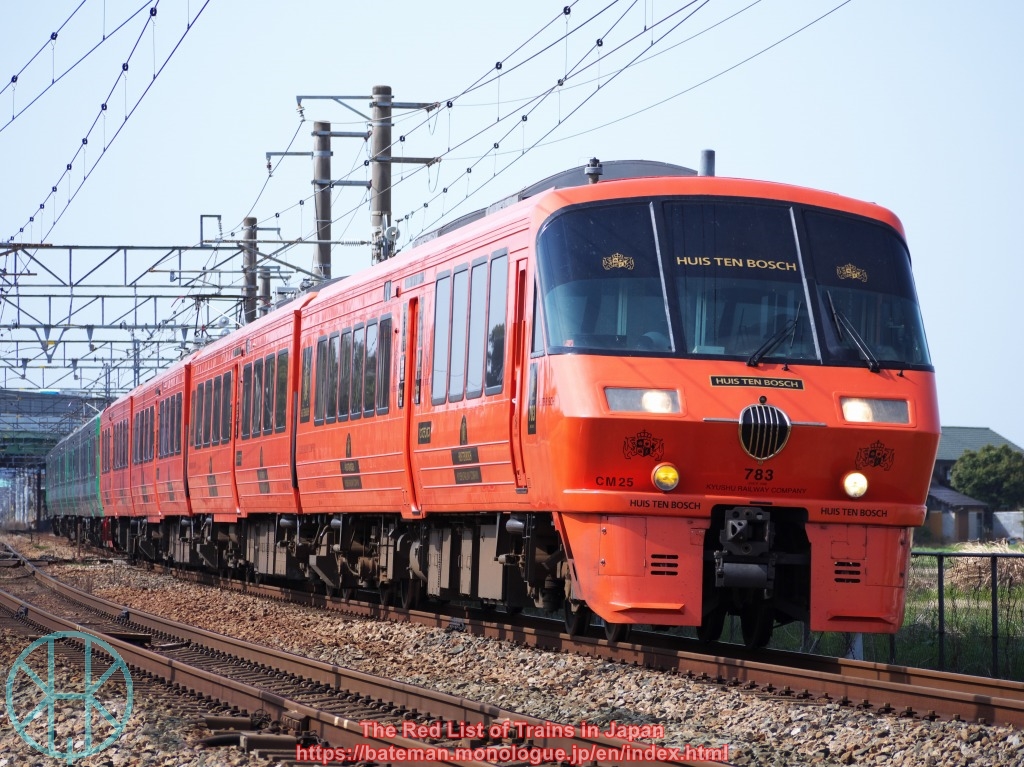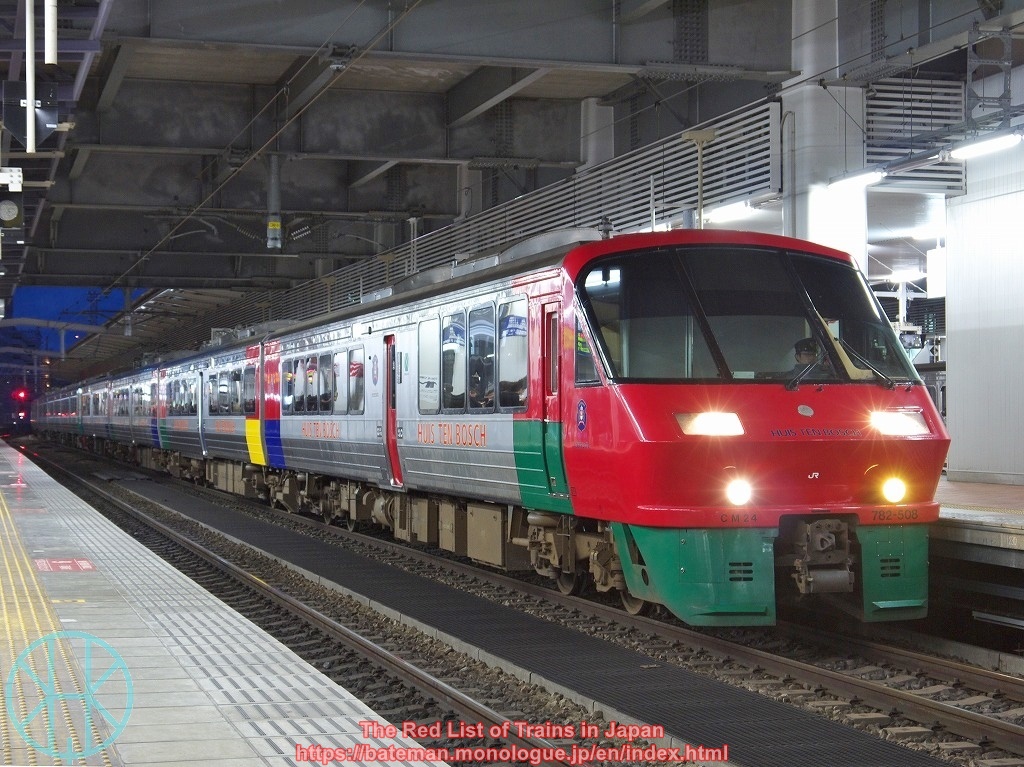JR Kyushu 783 series

Data (as of 29 Nov 2025)
| Status: | Vulnerable |
| Constructed in: | 1988-91 |
| Number built: | 90 |
| Registered: | 48 |
History
The 783 series was the first limited express train developed after the privatisation of Japanese National Railways. Its development began just before the privatisation, and JR Kyushu completed the work. It was faster and far more comfortable than 485 series, which was the most common type of limited express at that time. JR Kyushu envisaged that the 783 series could attract passengers and they would prefer trains to cars and buses.
One of the unique features of the 783 series is that there is a set of doors in the middle of each carriage, and each carriage is separated to two rooms. The company considered that this layout would make it easier to flexibly separate non-reserved and reserved seats or non-smoking and smoking rooms.
The 783 series trains entered limited express services of Ariake and Super Ariake (Hakata - Nishi-Kagoshima), Kamome (Hakata - Nagasaki) and Nichirin (Hakata - Oita). Since the 783 series was far more comfortable than the 485 series, too many passengers attempted to get on services provided by the 783s. When newer limited express trains were introduced, JR Kyushu refurbished the 783s several times. Today, four-carriage units are allocated to Minami-Fukuoka Depot.
Current Operations & Future Prospects
The 783 series are now used on Limited Express Huis Ten Bosch (Hakata - Huis Ten Bosch), Kasasagi (from Saga to Hakata), Kirameki (Mojiko - Hakata) and Midori (Hakata - Sasebo). Since the 783 series is one of the oldest limited express train type, not a few units have been taken out of services since Nishi-Kyushu Shinkansen was opened in 2022.
Photos

Limited Express Midori

Limited Express Huis Ten Bosch (the livery before 2019)
(Updated: 29 Nov 2025)
